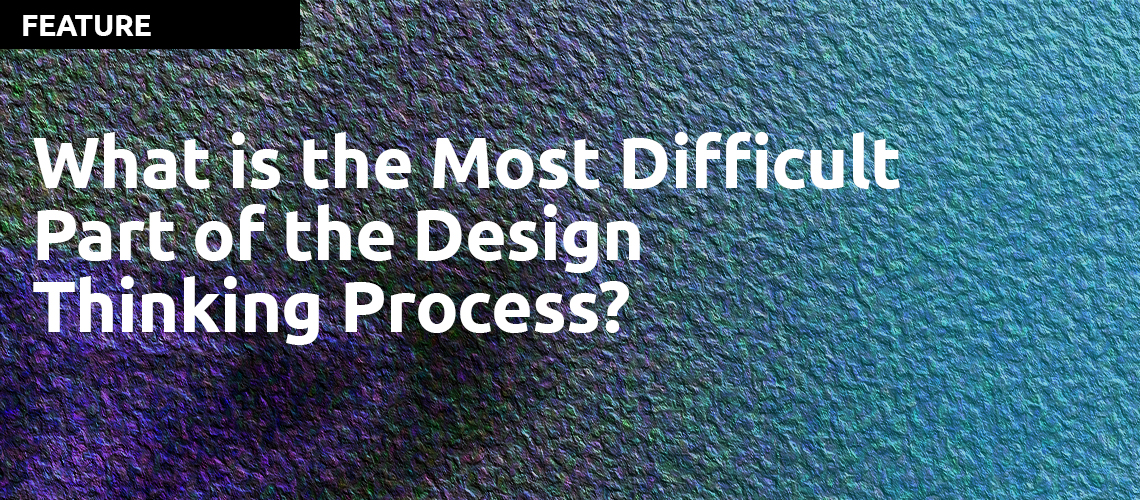
We recently sent out a survey to the Design Thinking community to understand how they perceived Design Thinking. One of the questions asked what they found to be the most difficult part of the Design Thinking Process.
Surprisingly the answers were not as varied as one might expect. In fact they were almost exclusively clustered into three areas: Integration into the existing business and its processes, Time and (re)Defining the Problem Statement.
Time
Not having enough tIme is mentioned by 22.7% of the respondents as their biggest problem with the Design Thinking process. Time and Integration into the existing business processes represent 68.2% of all responses. It is clear from our research what practitioners need to work on to become more effective at Design Thinking.
The more we dig into the results, the clearer it becomes that these two issues are in fact closely related. It comes down to:
How much is the Design Thinking Process valued by your corporation?
If it is not valued, it will not be respected as an important ideology/process by your peers and therefore not given the required time needed to do it correctly or the required integration into their existing processes to deliver on the promise it holds to create innovation and new value for the corporation. If you feel you don't have enough time, start asking who does not believe in its value and start to work on helping them to understand what Design Thinking can deliver for them. See below for some good evidence you can use to present the value of a Design-led culture and a Design Thinking approach to innovation.
Integration into the business and its existing processes.
This was mentioned as the most difficult part of the process by 45.5% of the respondents. This should come as no surprise for anyone who participates in Design Thinking. Most business processes are designed to reduce risk to as close to zero as possible within time and budget. One of the simplest ways to integrate Design Thinking into existing business processes is to run the exercise before the actual project instead of as the first phase of the actual project. Sounds crazy, but I have seen it work really well. In this way, it also ensures that there is sufficient time, the second most important issue mentioned here. I would liken this to strategy work. If you included strategy work as the first phase of a project, it would hit similar issues. Best to run it as a separate project which delivers the direction for the project to be executed. That is one way to overcome the integration issues.
Vincent Dromer, a Design Thinking Association Paris Chapter leader, has written a good article, 5 Tips to Integrate Design Thinking into your Organizations Process. In his article Vincent discusses how to enable the culture change required in an organization to accept the Design Thinking Methodology. He offers some good practical tips on how to ease the process in without upsetting and discouraging people from participating in it.
Michael Preuss offers another interesting insight in his article The Business of Design: A guide to implementing Design Transformation. Michael references research by InVision, The New Frontiers of Design, which looked at 2,000 companies in 77 countries. The research reported that only 52% or respondents said that “Design has joint working sessions with key partners” and that only 51% of “Employees participate in the design process”. This certainly backs up our much smaller research finding that integration into the business processes of corporations is a major challenge for Design Thinking teams and leaders. Michael goes on to say that when you look at how few corporations are infusing their cultures and processes with Design Thinking that it represents an enormous opportunity for companies to increase their value creation. Especially when you look at the Design Management Institutes report, The Value of Design, on the growth of design-led companies versus non design-led companies. They show an average growth of 228% over a 10 year period for design-led versus non design-led. He points out that it is useless building a perfect project if it does not resonate with users. In his 5 step to creating the right solution, he says that it is critical that companies "make space for Design Thinking."
If you are struggling to get Design Thinking accepted in your corporation it might be useful to start with introducing the value of a design-led approach to your colleagues and leaders. Build the business case for Design Thinking before rolling out a Design Thinking program. Use the DMI research as a starting point. Most leaders find it hard to counter the evidence that integrating design will help them outperform their competitors by more than 200% in the long run. Put the other way around, if they prefer to understand the risks they face, you could suggest that your competitors who are integrating design could beat you by over 200% in the long run! Carrot or the stick? Only you know your bosses!
What is clear is that you will need to start a culture change program in order to integrate Design Thinking into your organization successfully over the long term and the evidence is on your side that this will create value for the corporation.
